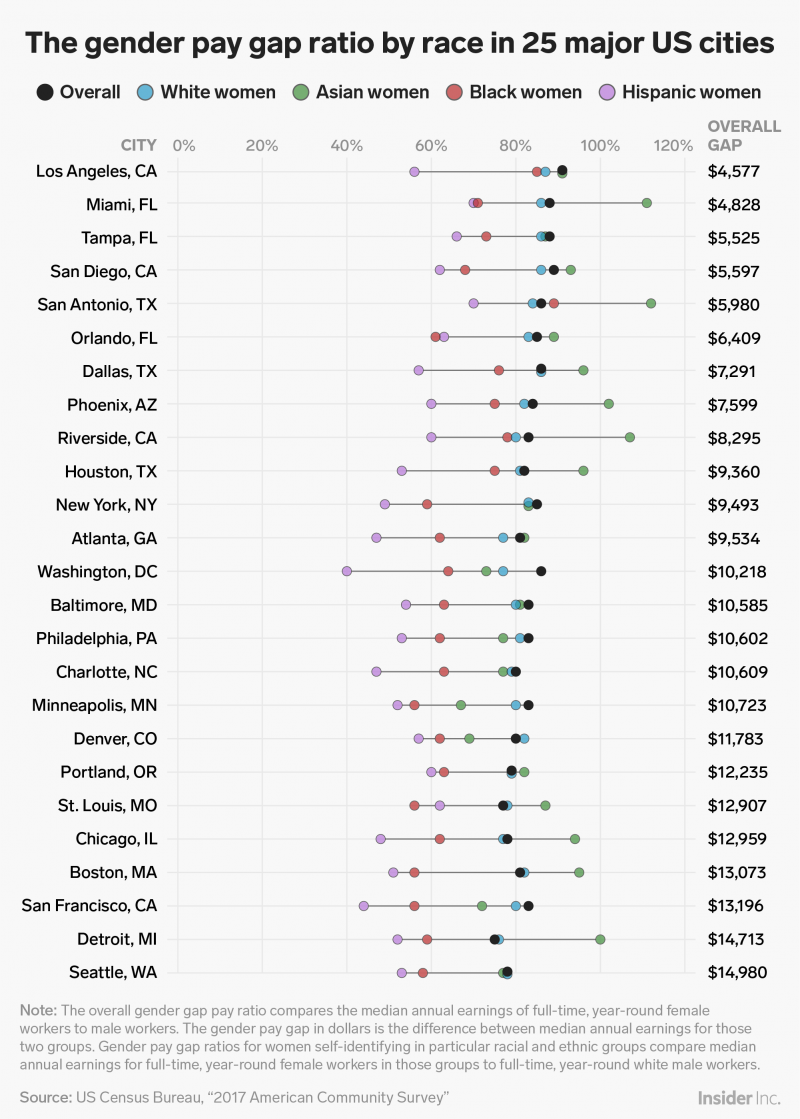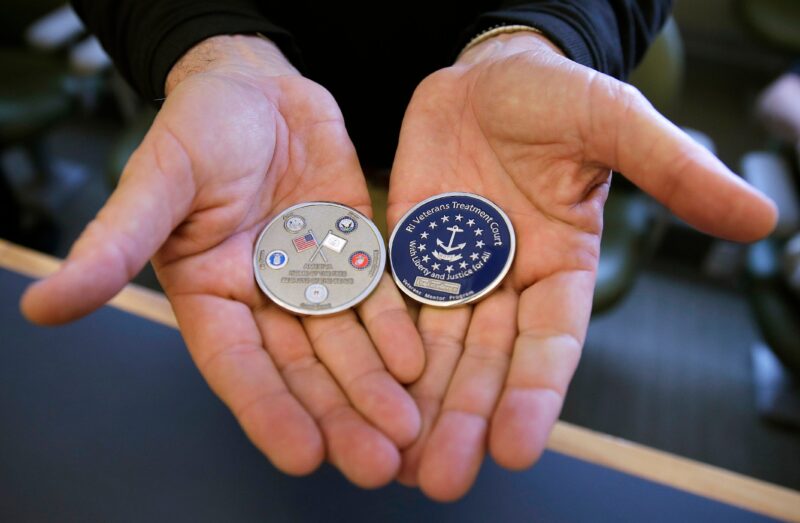- In 2017, American women earned 19.3% less than their male colleagues, according to the most recently available data from the US Census Bureau.
- A recent analysis looks at gender wage gaps between white men and women of four different races in 25 major US metro areas.
- In most of the cities analyzed, Hispanic women fared the worst.
- Los Angeles has the narrowest gender wage gap in the dataset overall, while Seattle has the widest, according to the analysis.
March 8 is International Women’s Day, and while a lot of progress has been made to shrink the gender wage gap in the US, there’s still work to be done. While women graduate from college at higher rates than men, the former still earn less than the latter in 2018.
According to the US Census Bureau’s American Community Survey, the gender wage gap in 2017, the most recent year for which data is available, stood at around 19.3% nationwide on average. The median full-time, year-round female worker earned $41,512, about 80.7% of her male counterpart’s median earnings of $51,421.
But the wage gap differs depending on several factors, especially race and location.
A report from the American Association of University Women (AAUW), a nonprofit that advocates for gender equality, analyzed salary disparities in 25 major metro areas across the US.
In the chart by Business Insider below, incorporating data from the 2017 American Community Survey, you can see how cities stack up against each other.
The "overall gender pay ratios" compare the median salaries for women and men (of every race) who work full time, year-round. Segmenting Census data by four different races for women, the AAUW also looked at how those median earnings compared to what white men make.

The analysis shows that large disparities exist between men's and women's salaries in each of these cities, with the widest gaps tending to exist between Hispanic women and white men. In Houston, Texas, Hispanic women earned around 53% of what white men make.
Out of the 25 metros, the narrowest gender wage gap overall is in Los Angeles, CA, where women earned about 91% of what men made. That said, the ratios for Hispanic and black women in that metro area were 49% and 59%, respectively, compared to white men. There, white women earn 85% of white men's salaries.
The gender wage gap appears to be especially bad in tech hubs, like Seattle and the Bay Area. As Business Insider's Avery Hartmans previously reported, a 2016 survey of 10,000 American tech employees found an overall gender wage disparity of 30% in Seattle and 20% in San Francisco. In Seattle, the report found, women working in tech make about $110,000, while men make $143,000.
Since 1979, the gender pay gap has narrowed, but at the same time, it has stayed relatively stable over the past 15 years or so. A number of experts have weighed in on what perpetuates the disparity, including taking time off to raise children, and the fact that fewer women often work in the highest-paying industries.
But as the Pew Research Center noted, another factor - gender discrimination at work - is harder to quantify. In a survey conducted in 2017, roughly four in 10 working women say they experience gender discrimination, with the highest percentage reporting that they earn a lower salary than their male colleagues for the same job.










